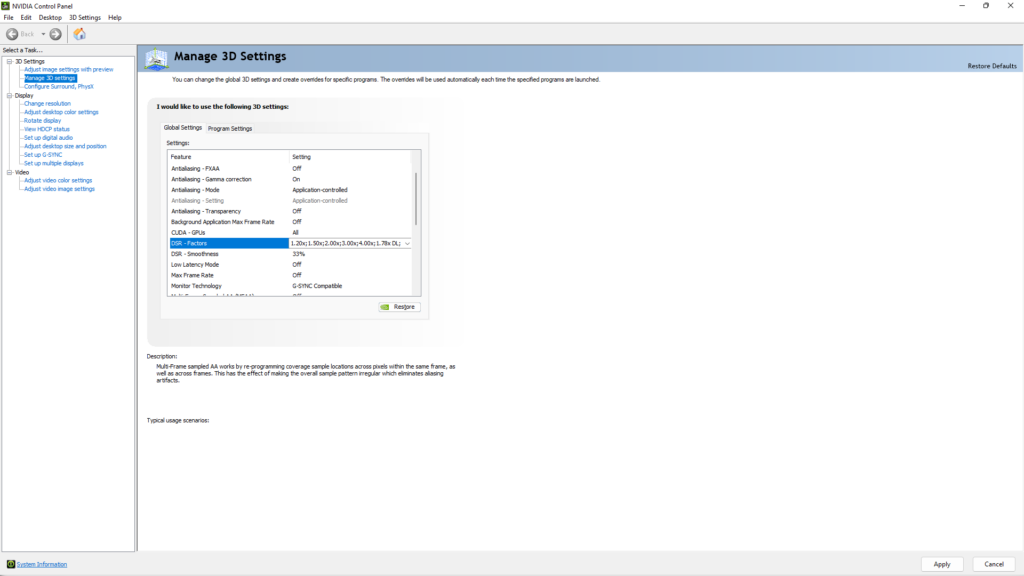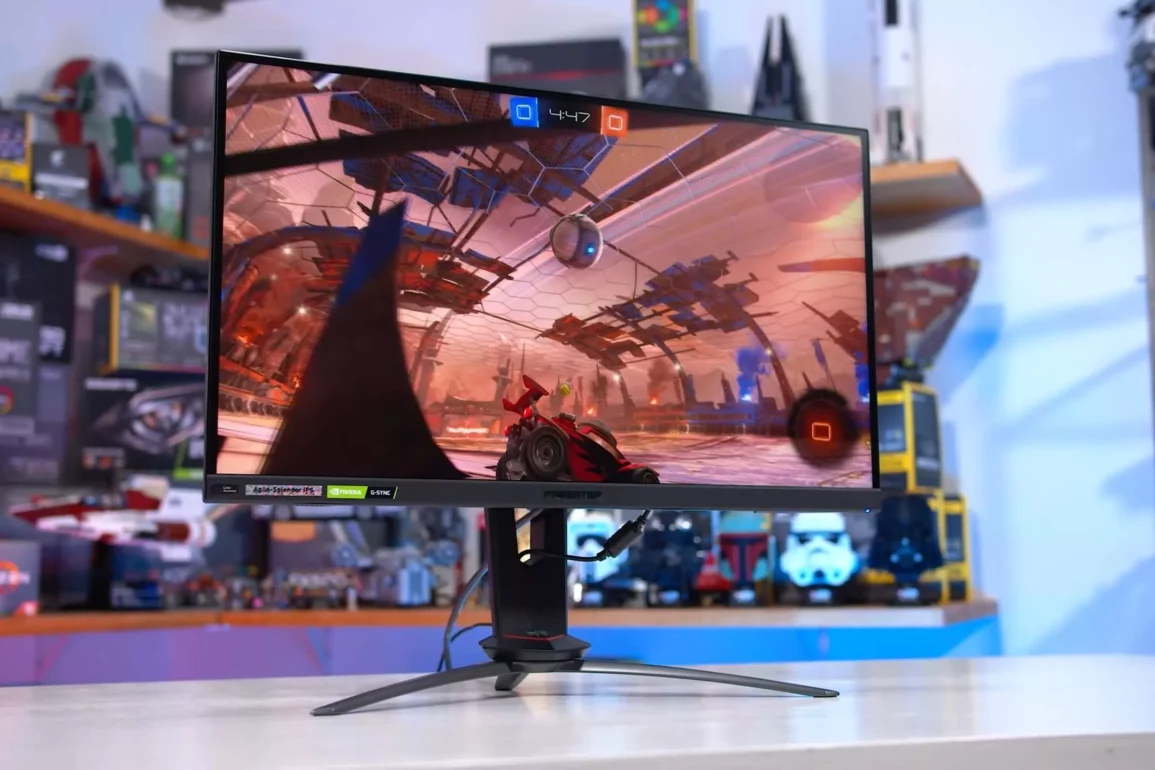Last Updated on September 23, 2022 by Nahush Gowda
1440p resolution is the sweet spot for gaming but 1080p is still the mainstream option for most users. Ever wondered how will 4k look on a 1080p monitor?
Gaming on 1080p is great for budget but 1080p gaming makes the jagged edges more visible. If jagged edges bother you, supersampling allows you to run your games at 1440p or 4K or higher—even on a 1080p monitor—for a noticeably sharper image.
If you have a capable graphics card and you are still on a 1080p monitor you have the option to run all your games at 1440p or 4k depending on your graphics using supersampling.
Supersampling versus Higher resolution
If you are into gaming, you would be aware of something called anti-aliasing. It is a way of reducing the jagged edges and smoothening them. At 1080p there aren’t a lot of pixels to make it look smooth hence, the jagged edges.

Various anti-aliasing techniques are used to reduce this ugly effect, like MSAA (Multi-Sample Anti-Aliasing), TAA (Temporal Anti-Aliasing), SMAA (Subpixel Morphological Anti-Aliasing) and FXAA (Fast Approximate anti-aliasing).
All these techniques essentially do the same job of smoothening the edges. Although they are not perfect and many techniques use a considerable amount of GPU power. Improvement in anti-aliasing techniques has led to reducing the GPU load while providing the same visual benefit.
Nevertheless, in many cases applying anti-aliasing does not completely negate this issue. Some cause the image to look blurry and the result might vary depending on the game.

Remember that the problem of jagged edges is due to fewer pixels. There is another solution to reduce this problem and that is supersampling.
Supersampling is the process of rendering the image at a higher resolution (say 4k) and scaling it down to native resolution (1080p) to improve the image quality. It can be better than anti-aliasing but it might depend on the game and the kind of anti-aliasing the game is using.
You can use supersampling to run 1440p or 4k resolution on your 1080p monitor and this is how you do it.
Running 4k on a 1080p using supersampling
Using supersampling is basically fooling your computer into thinking that a higher resolution display is connected to it. Nvidia and AMD provide their own method for supersampling.
Enable Dynamic Super Resolution on Nvidia Cards
Dynamic Super Resolution (DSR) by Nvidia is a system-wide supersampling feature accessible via the driver’s Control Panel.
Before proceeding, ensure that you have a card that supports DSR and that you have the most recent Nvidia drivers installed.
- Open up Nvidia Control Panel by searching in Start Menu. You can also access it by right-clicking on your desktop and clicking on Nvidia Control Panel from the menu.
- On your left side, find Manage 3D settings.
- On the main window, find the DSR – Factors and enable all the Scaling options.
- Click on Apply and exit the Control Panel.

Now, you will be able to play games at various other resolutions including 1440p (2560×1440) and 4k (3840 x 2160).
Just below the DSR factors, you will also find DSR Smoothness. It is at 33% by default but you can tweak it according to your preferences. You can try playing games at the different percentages and see for yourself which works best for you. About 20 to 30% is usually preferred by many so you can start from there.
Enable Virtual Super Resolution on AMD Cards
Virtual Super Resolution is a supersampling solution used by AMD. You can enable it on AMD Radeon Software.
- Open up AMD Radeon Software by searching in Start Menu. You can also access it by right-clicking on your desktop and clicking on AMD Radeon Software from the menu.
- In the upper-right corner, click the Settings cog.
- On the top, click on the Display Tab. Select your Display (if you are using multiple displays) and turn on the Virtual Super Resolution.

Now, you will be able to play games at a resolution higher than your native resolution at 1440p or 4k.
Conclusion
If you have fairly powerful hardware and for some reason stuck with a 1080p monitor or simply want to play old games on 4k, you can use supersampling to run 4k resolution on a 1080p monitor.
Supersampling can be better than anti-aliasing because rendering at a higher resolution gives higher pixel counts and the jagged edges are not visible. The image quality is further enhanced by the fact that you are viewing more pixels on a smaller screen (more PPI) which might result in a better-looking game.
If you are looking for better gaming experience, find some of the best 1440p monitors here.

Leave a Reply
You must be logged in to post a comment.